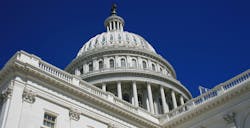Recent FDA action against Zika test further validates concerns over proposed LDP regulations
Mosquito season is here, and the Zika virus could soon reach crisis proportions across the United States. If we want to control this outbreak, we need accurate, timely diagnostic procedures as soon as possible; any further delays will have serious repercussions. Waiting weeks for test results is unacceptable as patients will disappear into the community and potentially transmit the disease with every mosquito bite and sexual encounter. On Capitol Hill, lawmakers are seeking information from Health and Human Services on the current status of research and development of diagnostic tests in order to provide the adequate funds to quickly combat the virus.1
Physicians at Texas Children’s Hospital and Houston Methodist Hospital recently created a laboratory-developed procedure (LDP) that identifies virus-specific RNA sequences and provides a diagnosis in hours. Results from state public health labs or the U.S. Centers for Disease Control and Prevention (CDC) can take weeks. Given the risk of infection in the Houston area, this type of test is critical for patient care and should be made available to these patients in need as soon as possible.
The FDA, however, seems to disagree and sent these physicians an “It Has Come to Our Attention” letter requesting to examine the procedure’s design, validation, and performance data. The letter refers to it as a high-risk test that has not been the subject of premarket clearance, approval, or Emergency Use Authorization (EUA) review. As of April 7, 2016, there were no FDA-approved tests for Zika, and the only EUAs had been provided to CDC, which can extend its authorization to selected laboratories. CDC has authorized only state public health laboratories and the Laboratory Response Network, an integrated network of domestic and international laboratories that respond to public health emergencies. Its announcement specifically noted that the test would not be available in U.S. hospitals or other primary care settings.
Public health labs and the CDC do not have the capacity to deal with the surge in test requests that is now upon us. CDC notes on its website, “Given the current volume of samples, test results will not be available for at least 3 weeks after specimen receipt.” The CDC and state public health labs cannot provide diagnostic test results in the timely fashion needed for immediate patient care. During the H1N1 outbreak of 2009, my colleagues, Dr. Karen Kaul and Dr. Jan Nowak, published an editorial highlighting the role of community molecular diagnostics laboratories in that pandemic and issued a call for better planning in the future.2
In late 2014, the FDA released a draft guidance that would apply regulations designed for medical device manufacturers to clinical laboratories and the medical professionals who perform essential laboratory services within them. The proposed framework is a drastic shift from the current model, in which the Centers for Medicare & Medicaid Services (CMS) regulate all laboratory testing (except research) performed on humans in the U.S. as guided by the Clinical Laboratory Improvement Amendments (CLIA).
Under the proposed FDA framework, laboratories around the country can expect similar letters requesting information or a Warning Letter that requires prompt voluntary compliance to hopefully avoid Agency enforcement action for many of the LDPs they offer. How will these laboratory directors respond? Do they have the financial and personnel resources required to prepare submissions for pre-introduction approval? The LDPs that have so far been cleared or approved by the FDA have been submitted by a few esoteric, commercial laboratories that provide one or a small number of sometimes proprietary tests that are performed in extremely high volume for narrow clinical indications. Some of these companies have spent millions of dollars and built separate laboratories dedicated to performing the single FDA-regulated service.
As the Medical Director of the Serious Communicable Diseases Unit (SCDU) Laboratory at Emory University, I am keenly aware of the necessity for accurate and timely diagnostic procedures. My laboratory was responsible for caring for four Ebola patients during that outbreak. During our initial activation, the only source of Ebola molecular diagnostic testing in the U.S. was the CDC. Since a significant portion of its staff were dealing with the public health crisis, results for clinical testing of our patients frequently had longer-than-expected turnaround times. EUA for several tests came later. While this was ultimately helpful, the process of these tests becoming available for clinical use was cumbersome for the acute setting of testing patients in our SCDU.
I am also the President of the Association for Molecular Pathology (AMP), an international medical and professional association representing more than 2,300 physicians, doctoral scientists, and medical technologists who develop, perform, interpret results of, or are otherwise involved with laboratory testing.
AMP believes the FDA-proposed framework would be enormously disruptive to healthcare and likely have profound adverse consequences for patients across the country. First of all, the proposed regulations are poorly suited for LDPs, which are not manufactured, boxed, and shipped throughout the country like in vitro diagnostic devices. Even assuming the FDA had the capacity to timely process submissions, it is financially and administratively infeasible for these mostly nonprofit academic medical centers, hospitals and health systems, and cancer center laboratories to prepare submissions for pre-introduction approval. Any such service for which FDA clearance or approval is required will very likely cease to be offered, and patients will lose access to innovative and accurate laboratory testing procedures.
Oversight of LDPs is currently provided by the CLIA program at CMS. CLIA utilizes third-party accreditors that have an extensive network of specialty subject matter experts to conduct inspections, provide proficiency testing, and perform other activities to help CLIA achieve its mission. In order to adequately address increasingly complex testing, the most reasonable and effective path forward, as outlined by AMP, is to modernize the current CLIA structure, expand its current network of third-party medical experts, and utilize scientific expertise from the FDA and CDC. AMP’s proposal is a tiered, risk‐based structure that provides assurance of quality, analytical validity, and clinical validity without jeopardizing innovation or patient access to necessary care; and, it avoids duplication of activities within and between federal agencies. In fact, this is the best regulatory path forward, both for patient care and for the taxpayer.
My hope is that Congress mandates an economic impact study before the regulatory framework is finalized in order to fully understand all of the effects this proposed policy shift would have on laboratory medicine. This type of study should encourage the FDA and CMS to work together with key stakeholders to strengthen and modernize the current regulatory system, which builds upon the thousands of successful LDPs. Patient care across the country depends upon getting any new regulation right.
REFERENCES
- Upton F, Murphy T. Letter to Secretary Burwell. https://energycommerce.house.gov/sites/republicans.energycommerce.house.gov/files/documents/114/letters/20160329HHS%20Zika.pdf.
- Nowak J, Kaul K. The role of community molecular diagnostics laboratories in the H1N1 pandemic. Journal of Molecular Diagnostics. 2009;11(5). http://jmd.amjpathol.org/article/S1525-1578(10)60253-X/pdf.

